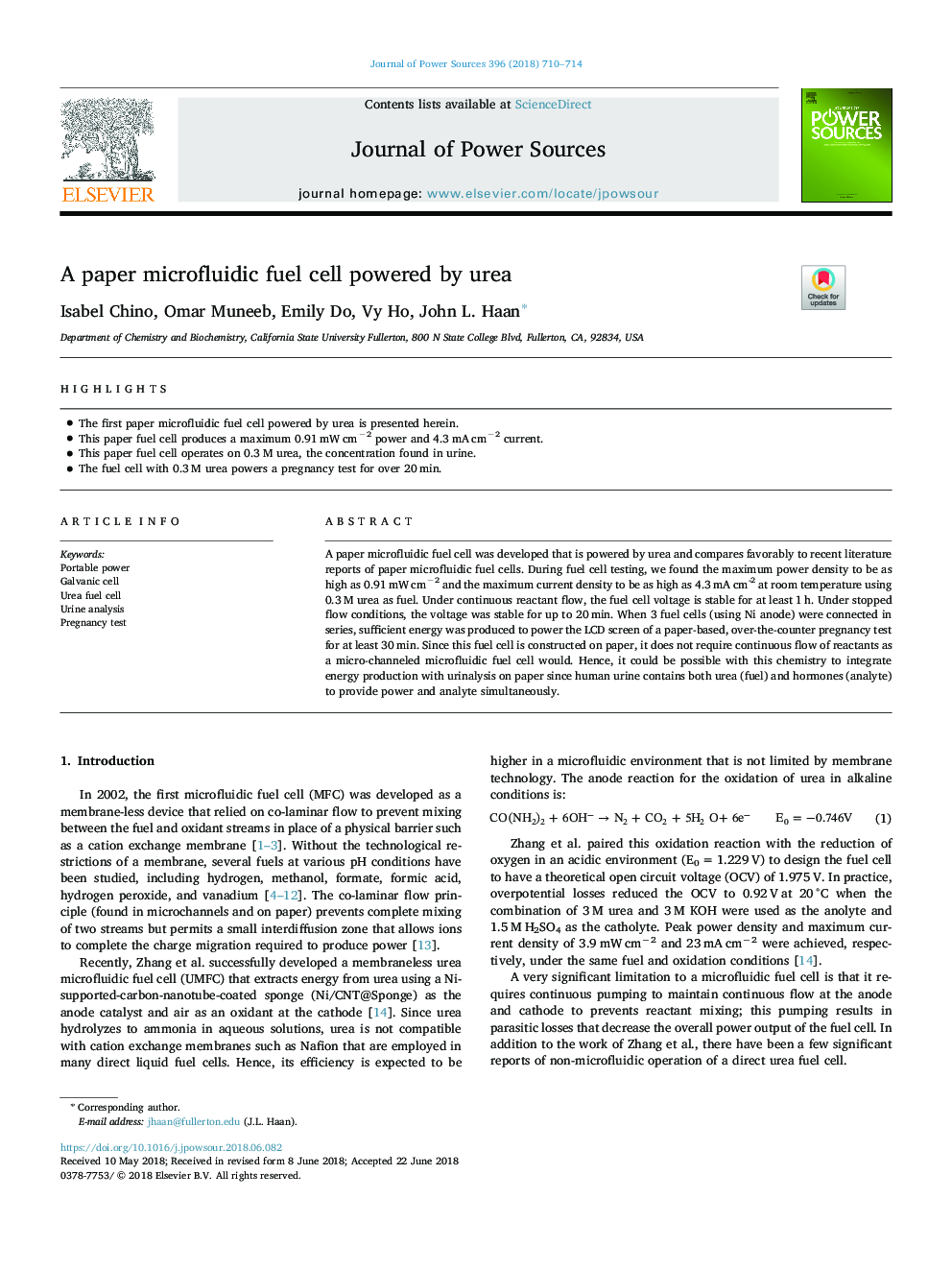| Article ID | Journal | Published Year | Pages | File Type |
|---|---|---|---|---|
| 7724988 | Journal of Power Sources | 2018 | 5 Pages |
Abstract
A paper microfluidic fuel cell was developed that is powered by urea and compares favorably to recent literature reports of paper microfluidic fuel cells. During fuel cell testing, we found the maximum power density to be as high as 0.91â¯mWâ¯cmâ2 and the maximum current density to be as high as 4.3â¯mAâ¯cm-2â¯at room temperature using 0.3â¯M urea as fuel. Under continuous reactant flow, the fuel cell voltage is stable for at least 1â¯h. Under stopped flow conditions, the voltage was stable for up to 20â¯min. When 3 fuel cells (using Ni anode) were connected in series, sufficient energy was produced to power the LCD screen of a paper-based, over-the-counter pregnancy test for at least 30â¯min. Since this fuel cell is constructed on paper, it does not require continuous flow of reactants as a micro-channeled microfluidic fuel cell would. Hence, it could be possible with this chemistry to integrate energy production with urinalysis on paper since human urine contains both urea (fuel) and hormones (analyte) to provide power and analyte simultaneously.
Related Topics
Physical Sciences and Engineering
Chemistry
Electrochemistry
Authors
Isabel Chino, Omar Muneeb, Emily Do, Vy Ho, John L. Haan,
